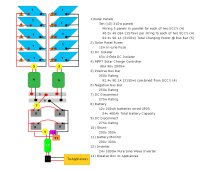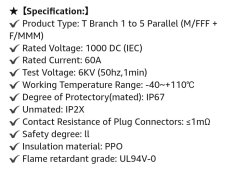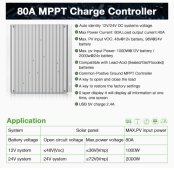10 315W panels is of course 3150W. 3150W / 26V is about 120A of possible charge current. A 60 amp controller is half of what you might need. It would be fine if you used two of them, each with 5 panels. That would give you 120A of charge current. Or do 2S3P (6 panels) on a controller and 2S2P on another. That would mean a 70 or 75A controller and a 45A or 50A controller.So if I wired them 2s5p, having 92.4v and 45amps, I could use a 60amp 105vdc (@24v) MPPT charge controller ?
That much solar is better on a 48V system. Then a single 60A charge controller could handle the 3150W of solar panels just fine.







